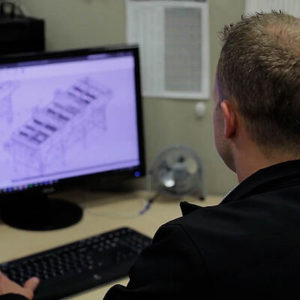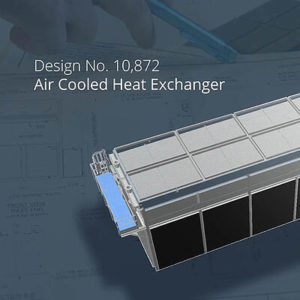Early-stage design decisions have a lasting impact on a heat exchanger throughout its entire service life. Design choices influence the unit’s performance and directly affect costs, efficiency and reliability in the face of anticipated challenges.
Some variables cannot be changed, while others can be readily adjusted by an industrial heat exchanger manufacturer to optimize unit performance. For instance, there may be no design flexibility in the fluid flow rate, but design elements such as tube properties or coating selection often present excellent opportunities for innovation.
Designing a heat exchanger for superior performance and value in a heavy fouling environment requires a forward-thinking approach—three essential tactics to consider include collaborating with the industrial heat exchanger manufacturer, applying antifouling coating and verifying the unit’s expected payback.
Let’s explore the ins and outs of these early-stage considerations.
Engage with an Industrial Heat Exchanger Manufacturer

Of course, many engineering consulting firms have a knowledge of basic heat exchanger design, but that’s not their specialty and generic design software provides generic guidance. By going to the industrial heat exchanger manufacturer early, you’ll capture cutting-edge insights specific to your process and production needs.
At Exchanger Industries Limited, our recommendations come with 60 years of trusted experience. We custom design and manufacture heat exchangers with proprietary technologies to solve tough challenges, optimize unit footprint and performance, and drive down total operating costs for your heat transfer equipment.
Prioritize antifouling technology
Considering antifouling technology early in the design stage creates opportunities to adjust an important heat exchanger variable—the fouling factor.
It’s common knowledge that heat exchangers are susceptible to fouling. Throughout its lifetime, a typical exchanger endures a never-ending cycle:
- Foulant accumulates
- Performance degrades
- Cleaning removes foulant and restores efficiency
- The unit returns online, and the process repeats
The sequence isn’t just frustrating; it’s costly. There’s the additional fuel to counteract the steady decline in heat transfer and corresponding pressure drop. There are the physical and chemical treatments to recover efficiency, often with diminishing returns. And then there’s downtime, which directly hits the bottom line when production is bottlenecked or indirectly when you’re forced to spend your limited capex on redundant units.
Stop for a second to imagine the benefits of reducing that fouling factor. Great, aren’t they?
When design engineers can confidently expect less fouling, producers get a heat exchanger that has a smaller footprint and costs less.
Repelling even the most tenacious of foulants, advanced heat exchanger coating systems leverage the chemical properties of fluoropolymers to discourage foulant from adhering to the tube-side of a heat exchanger. With no build-up, there’s no need for cleanings—a heat exchanger that typically performs consistently for days or weeks before fouling, maintains consistent performance over months or even years.
Exceptional coating performance does come with a trade-off; the relative ease with which many basic coatings can be applied is, not surprisingly, reflected in their significant performance and durability limitations. In contrast, a fluoropolymer coating system has a multi-step application process that requires a controlled, high-temperature environment for high-quality results. Thus, the coating is best specified in the design phase to be incorporated during unit fabrication.
Including antifouling coating for a heat exchanger is a justifiable investment, as it has the potential to quickly pay off in efficiency gains and uptime, not to mention the considerable capital it may save if adopted during the planning phase.
However, before committing, wouldn’t it be nice to validate the payback you can expect?
Validate Payback with Measurable Results

Which is understandable—when isn’t budget a concern?
Technology upgrades are always debatable, which is why Exchanger Industries helps customers quantify their ROI on heat exchanger enhancements. Antifouling technology has already demonstrated its value in the field, returning a rapid payback in heavy fouling applications. To prove its use for your process, we work with operations and perform site monitoring to confirm the unit’s value-in-use—putting a firm number to your payback period.
Reactive techniques, such as retrofits, field coating or cleanings, are expenses that don’t outright solve fouling. Instead, they’re a bandage that improves efficiency until the fouling cycle kicks in again.
Exchanger Industries’ proprietary antifouling coating, however, is a proactive solution that prevents material deposition in the first place.
Compared to reactive techniques, in a short time, the cleaning savings alone are often sufficient to justify purchasing an antifouling-coated heat exchanger. Add in the tangible environmental, health and safety benefits associated with improved energy efficiency and elimination of handling and disposal of toxic cleaning chemicals and the investment decision becomes clear-cut.

